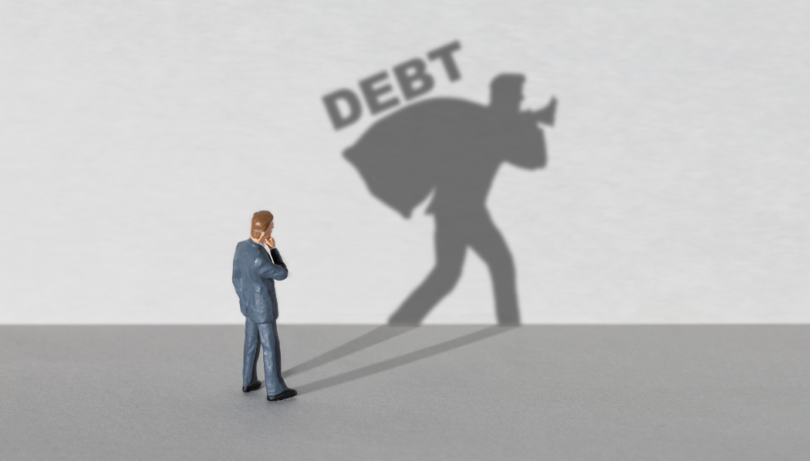When the Past Comes Back to Haunt You: Preferential Payments in Bankruptcy

Simply mentioning the word “bankruptcy” can evoke a wide range of reactions from people—most of them unpleasant. And rightfully so, because when a party files for bankruptcy—especially a business—other businesses or individuals who dealt with the debtor business before the bankruptcy will often lose money or equipment when the dust settles.
Anyone who has ever been involved in a bankruptcy understands that a bankruptcy affects many parties—not just the debtor seeking bankruptcy. Often, bankruptcy negatively affects vendors that conducted business with the debtor in the months and years leading up to the bankruptcy. The bankruptcy trustee, a person appointed to oversee the administration of the debtor’s bankruptcy estate, has wide latitude to control that bankruptcy through the federal Bankruptcy Code. One of the strongest tools in a trustee’s proverbial “toolbox” is the power to “avoid” payments made by the debtor to a creditor within a certain time prior to the bankruptcy filing. These payments are referred to as “preferential payments” or “preference payments.” Preference payments are a transfer of interest of the debtor in property for the benefit of the creditor, on account of an antecedent debt, made while the debtor was insolvent, that left the creditor better off than it would have been and the creditor asserted its claim in a Chapter 7 liquidation. 11 U.S.C. §547(b). Generally speaking, these payments are made by the debtor in the ninety (90) days preceding the debtor’s bankruptcy petition’s filing. See 11 U.S.C. §547(b)(4)(A). Absent an affirmative defense under 11 U.S.C. §547(c), the payment can be “avoided” by the trustee, and the payments must be returned or repaid by the creditor or the creditor risks being sued by the trustee—even though the creditor did nothing wrong. This doesn’t seem fair—certainly not to the creditor—however, in the context of the bankruptcy court, no creditor should be preferred over another in the months preceding the bankruptcy. Hence, the term “preference.”
While there are defenses under 11 U.S.C. §547(c) that can reduce or in some cases defeat the amount sought by the trustee as a preferential payment, many creditors are initially at the mercy of the diligence of the trustee. If the trustee and creditor cannot resolve the allegation of the preferential payments through settlement, and the trustee files a lawsuit, the creditor now has to defend against that lawsuit. One defense commonly asserted by creditors referred to as the “ordinary course of business defense.” In order to succeed in such a defense, a creditor must typically demonstrate that either (i) the debt was incurred by the debtor in the ordinary course of business or financial affairs of the debtor and the transferee (i.e., the creditor), or (ii) the deal was made under ordinary business terms. In re KLN Steel Prod. Co., LLC, 506 B.R. 461, 468 (Bankr. W.D. Tex. 2014). These two prongs are referred to as the “subjective prong” and the “objective prong.” Id. Only one of these two prongs need be proven to successfully establish the defense. See G.H. Leidenheimer Baking Co. v. Sharp (In re SGSM Acquisition Co.), 439 F.3d 233, 240 n. 4 (5th Cir. 2006) (acknowledging that after the 2005 amended Code, “the second and third prongs of the ordinary course defense have become disjunctive rather than … conjunctive”).
The “subjective prong” focuses upon “whether the transactions between the debtor and the creditor before and during the ninety-day period are consistent.” ACP Ameri–Tech Acquisition, LLC, 2012 WL Adv. No. 10-9029, 2012 WL 481582 at *8 (Bankr.E.D. Tex. Feb. 14, 2012) (quoting Lightfoot v. Amelia Maritime Svcs. Inc. (In re Sea Bridge Marine, Inc.), 412 B.R. 868, 872 (Bankr. E.D. La. 2008)).
The “objective prong” centers upon whether the payments are consistent with the “customary terms and conditions used by other parties in the same industry facing the same or similar problems.” Gasmark Ltd. Liquidating Trust v. Louis Dreyfus Nat. Gas Corp. (In re Gasmark, Ltd.), 158 F.3d 312, 317 (5th Cir. 1998); see also Gulf City Seafoods, Inc. v. Ludwig Shrimp Co., Inc. (In re Gulf City Seafoods, Inc.), 296 F.3d 363, 368 (5th Cir. 2002).
The defense of preferential payments claims can be a long and tedious process that can have disastrous financial consequences for the unwary creditor. At a minimum, the creditor should insist that the trustee clarify the specific dollar amounts that could be subject to an offset, the insolvency amount at the time of the alleged preferential transfer, why a reduction based on new value added is not applicable, whether the ordinary course of business defense applies, and the factors and documents the trustee reviewed and relied on to make that determination.
Should you receive a bankruptcy notice identifying you or your company as a potential recipient of preference payments, promptly seek counsel to adequately advise you of your rights, liabilities and potential applicable defenses as a creditor in the bankruptcy.
These materials are made available by Stibbs & Co., P.C. for informational purposes only, do not constitute legal or tax advice, and are not a substitute for legal advice from qualified counsel. The laws of other states and nations may be entirely different from what is described. Your use of these materials does not create an attorney-client relationship between you and Stibbs & Co., P.C. The facts and results of each case will vary, and no particular result can be guaranteed. The facts and results of each case will vary, and no particular result can be guaranteed.




